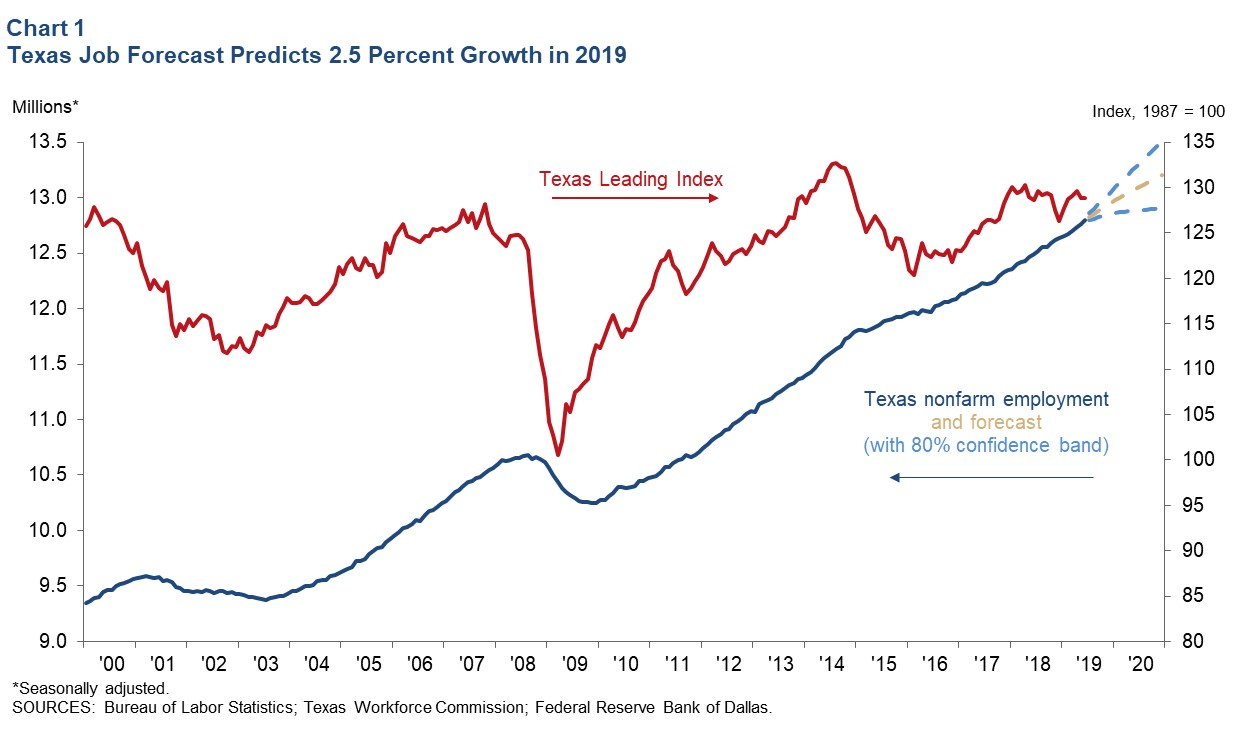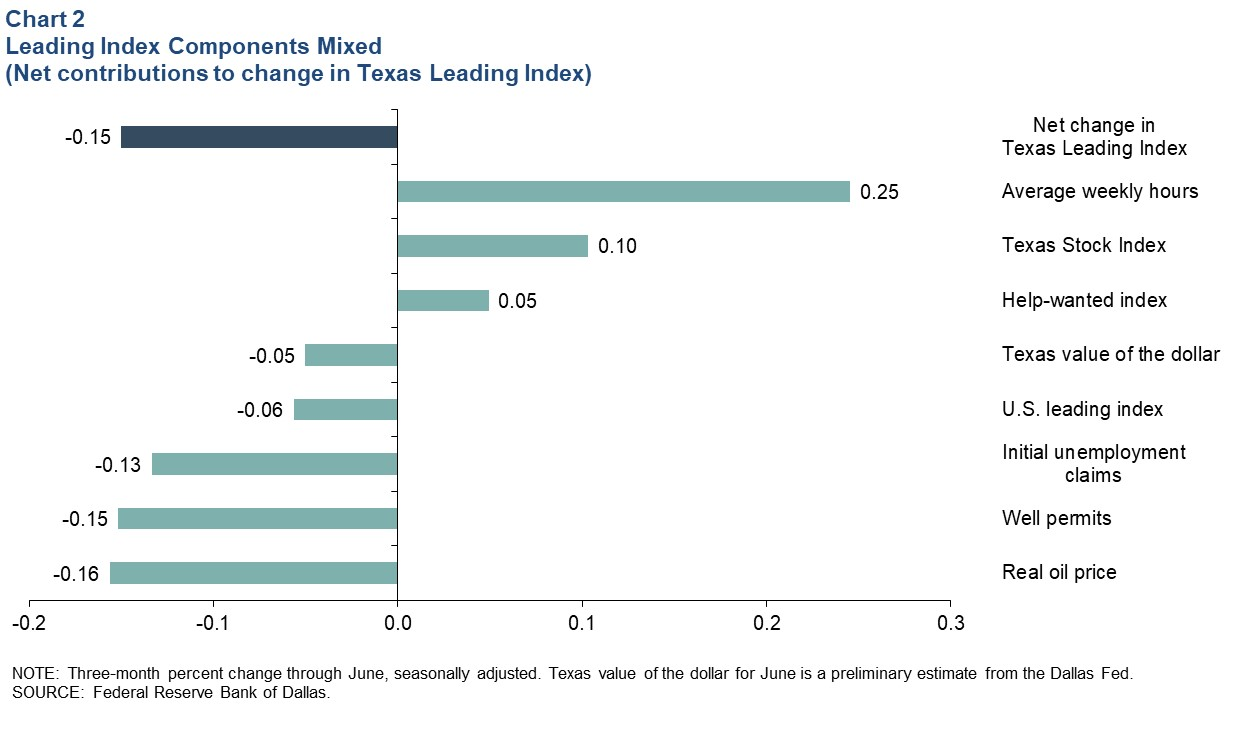Texas Employment Forecast

Incorporating June job growth of 3.9 percent and a mild decline in recent months in the leading index, the Texas Employment Forecast suggests jobs will grow 2.5 percent this year (December/December), with an 80 percent confidence band of 1.7 to 3.3 percent. Based on the forecast, 321,800 jobs will be added in the state this year, and employment in December 2019 will be 12.9 million (Chart 1).
“While the manufacturing and mining sectors have slowed this year, the decline in mortgage rates has helped boost construction jobs, which grew at an annual pace of 6.0 percent in the first half,” said Keith R. Phillips, Dallas Fed assistant vice president and senior economist. “Adding to the improvement in construction, the financial services sector has accelerated, led by gains in banking firms and insurance agencies. Job growth has been good across most metro areas with particularly strong growth in Dallas, which accelerated from 2.5 percent growth in 2018 to 4.4 percent in the first half of this year.”
The Dallas Fed’s Texas Leading Index increased slightly in June after a moderate decline in May (Chart 2). Over the three months ending in June, the index declined a mild -0.2 percent, with five of the eight indicators showing declines. The energy indicators gave the most negative signals followed by an increase in new claims for unemployment insurance, a mild decline in the U.S. leading index and an increase in the Texas value of the dollar. Partially offsetting these negative signals were an increase in the average weekly hours worked in manufacturing, an increase in the stock prices of Texas-based companies and a slight increase in help-wanted advertising.


Next release: August 16, 2019
Methodology
The Dallas Fed Texas Employment Forecast projects job growth for the calendar year and is estimated as the 12-month change in payroll employment from December to December. The forecast reported above is a point estimate with 80 percent confidence bands; in other words, the true forecast lies within the bands on Chart 1 with 80 percent probability.
The Dallas Fed Texas Employment Forecasting Model is based on a transfer function that utilizes past changes in state employment along with past changes in the Dallas Fed Texas Leading Index (TLI). Changes in the TLI have an impact on employment with a lead time of three months, and the effect dies out slowly over time. The regression coefficients on lagged changes in employment and the TLI are highly statistically significant, and the model as a whole has been accurate relative to other forecasters over the past two decades.
The forecasting model has been in use at the Dallas Fed since the early 1990s, and the employment forecast has been published in the Western Blue Chip Economic Forecast (WBCF) since 1994. Phillips and Lopez (2009) show that the model has been the most accurate in forecasting Texas job growth relative to other forecasters in the WBCF. In particular, the model had the lowest root mean squared error and has been the closest to the actual the most times (nine of the last 17 years) out of five forecasters that have consistently participated in the survey.
For more details about the model and its performance, see “An Evaluation of Real-Time Forecasting Performance Across 10 Western U.S. States,” by Keith R. Phillips and Joaquin Lopez, Journal of Economic and Social Measurement, vol. 34, no. 2–3, December 2009.
Contact Information
For more information about the Texas Employment Forecast, contact Keith Phillips at keith.r.phillips@dal.frb.org.